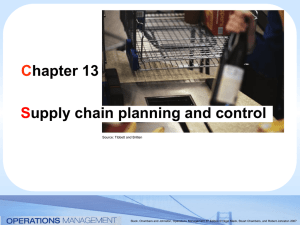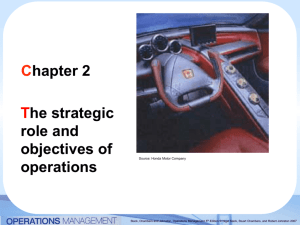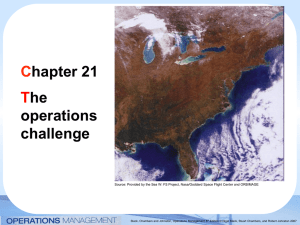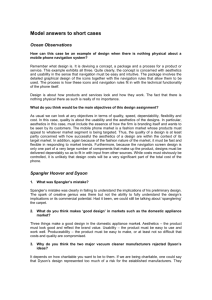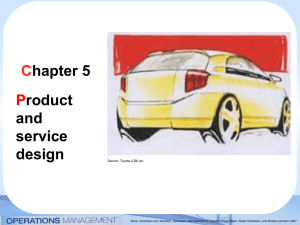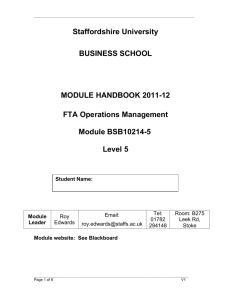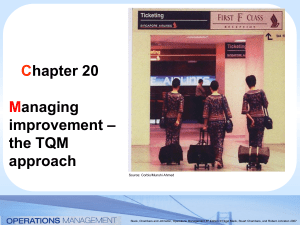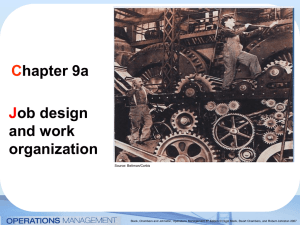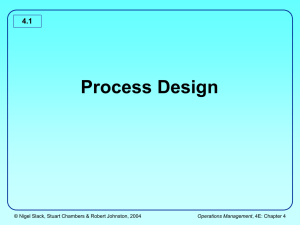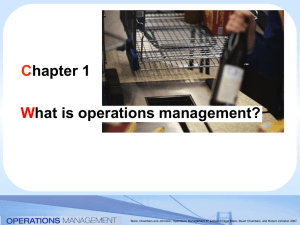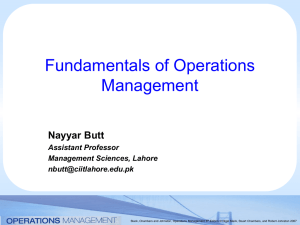revision slides
advertisement
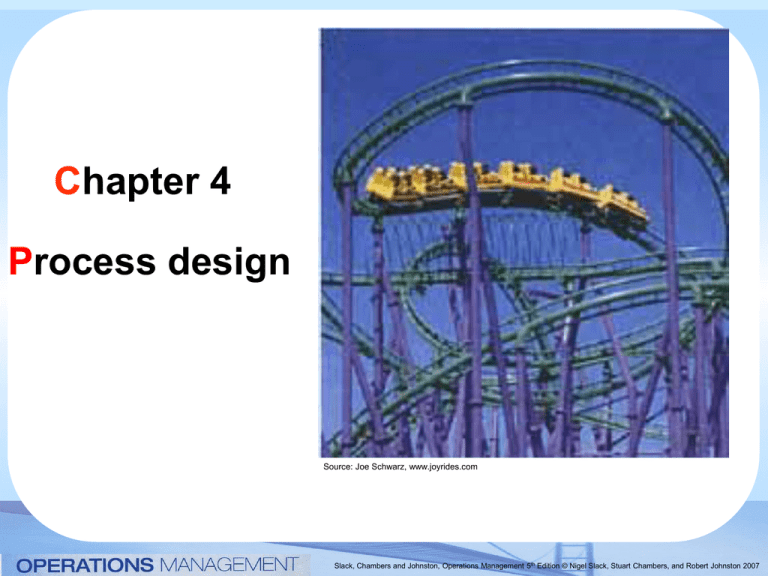
Chapter 4 Process design Source: Joe Schwarz, www.joyrides.com Slack, Chambers and Johnston, Operations Management 5th Edition © Nigel Slack, Stuart Chambers, and Robert Johnston 2007 Key Terms Test Throughput time The time for a unit to move through a process. Utilization The ratio of the actual output from a process or facility to its design capacity. Life cycle analysis A technique that analyzes all the production inputs, the life cycle use of a product and its final disposal in terms of total energy used and wastes emitted. Slack, Chambers and Johnston, Operations Management 5th Edition © Nigel Slack, Stuart Chambers, and Robert Johnston 2007 Key Terms Test Process types Terms that are used to describe a particular general approach to managing processes. In manufacturing these are generally held to be project, jobbing, batch, mass and continuous processes; in services they are held to be professional services, service shops and mass services. Project processes Processes that deal with discrete, usually highly customized, products. Jobbing processes Processes that deal with high variety and low volumes, although there may be some repetition of flow and activities. Slack, Chambers and Johnston, Operations Management 5th Edition © Nigel Slack, Stuart Chambers, and Robert Johnston 2007 Key Terms Test Batch processes Processes that treat batches of products together, and where each batch has its own process route. Continuous processes Processes that are high volume and low variety; usually products made on continuous processes are produced in an endless flow, such as petrochemicals or electricity. Professional services Service processes that are devoted to producing knowledgebased or advice-based services, usually involving high customer contact and high customization. Examples include management consultants, lawyers, architects, etc. Slack, Chambers and Johnston, Operations Management 5th Edition © Nigel Slack, Stuart Chambers, and Robert Johnston 2007 Key Terms Test Service shops Service processes that are positioned between professional services and mass services, usually with medium levels of volume and customization. Mass services Service processes that have a high number of transactions, often involving limited customization, for example mass transportation services, call centres, etc. Product–process matrix A model derived by Hayes and Wheelwright that demonstrates the natural fit between volume and variety of products and services produced by an operation on one hand, and the process type used to produce products and services on the other. Slack, Chambers and Johnston, Operations Management 5th Edition © Nigel Slack, Stuart Chambers, and Robert Johnston 2007 Key Terms Test Process mapping Describing processes in terms of how the activities within the process relate to each other (may also be called process blueprinting or process analysis). Process mapping symbols The symbols that are used to classify different types of activity, usually derived either from scientific management or from information systems flowcharting. High-level process mapping An aggregated process map that shows broad activities rather than detailed activities (sometimes called an outline process map). Slack, Chambers and Johnston, Operations Management 5th Edition © Nigel Slack, Stuart Chambers, and Robert Johnston 2007 Key Terms Test Work content The total amount of work required to produce a unit of output, usually measured in standard times. Throughput time The time for a unit to move through a process. Cycle time The average time between units of output emerging from a process. Slack, Chambers and Johnston, Operations Management 5th Edition © Nigel Slack, Stuart Chambers, and Robert Johnston 2007 Key Terms Test Work-in-process The number of units within a process waiting to be processed further (also called work-in-progress). Little’s Law The mathematical relationship between throughput time, work-in-process and cycle time: Throughput time = work-in-process × cycle time Slack, Chambers and Johnston, Operations Management 5th Edition © Nigel Slack, Stuart Chambers, and Robert Johnston 2007
